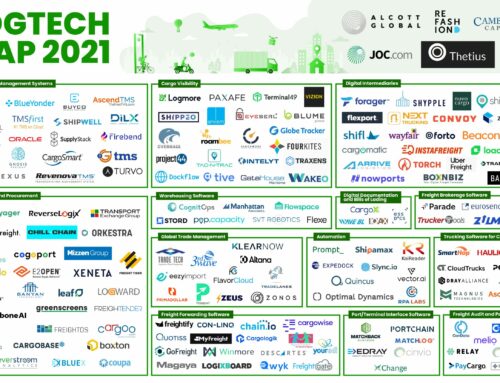How has the field of logistics changed as technology has advanced? How are traditional companies responding to the disruptment caused by all this new tech? This industry will continue to change as new competitors enter the market. But, how will existing companies survive? They must learn to adapt and invest in the new ideas emerging. If they choose not to, they may find themselves becoming obsolete.
Video Transcript
In 2017, we may finally see logistics and e-commerce converge into one.
First, let’s consider Amazon and the rule of 12. As we began this year, Amazon had $12 billion in annual shipping spend. It also had $12 billion plus of cash on the balance sheet. And finally, looking at the company 12 years ago, 2005 was the year the company launched Amazon Web Services. This, of course, has become the dominant source of profitability for the company.
Interestingly enough, a few months ago when Amazon and Uber announced plans for an app in logistics, the market value of one public logistics company dropped 12% that week. So, there’s a lot to watch with respect to Amazon.
But, it’s not just about Amazon. Look at the effect of self-driving trucks on the e-commerce and the supply chain industry. The Uber acquisition of Otto for over $600 million and the subsequent possibility of an “Uber for Trucking” app is an illustration.
We can look at drones with commercial deliveries for not just Amazon, but 7-Eleven, Maersk, and others under way. We can look at online freight booking with disruptors such as Freightos, 10-4, uShip, and others. We can look at e-commerce fulfillment with over $2 trillion of annual sales and 15% annual growth.
E-commerce customers are driving demand for faster fulfillment, leading to same-day and even same-hour logistics solutions from companies such as Amazon Prime Now, UberRUSH, Grand Junction, Doorman, and Bringg.
Finally, consider the over $5 billion capital invested in supply chain during the last year. This includes tracking technologies such as Macropoint, distributed warehouse companies such as Flexe and eFill, last mile logistics companies such as Bringg, and CRM companies such as Lanetix.
How should a company respond to all this change? Some smart supply chain companies are making investments in order to future-proof and ensure they will be ahead of the curve.
For example, the UPS Strategic Enterprise Fund has invested more than $400 million in disruptive technologies and businesses, ranging from drones to e-commerce fulfillment and other areas.
For supply chain companies, this will be the critical question facing everyone in the industry: How do you respond to the disruption?







